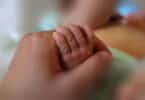For some time now, it has been thought that the safest way to deliver twins is through a cesarean. In fact, most moms pregnant with twins preemptively schedule a C-section close to their due date, often under the advisement of their obstetrician.
However, there is very little evidence to back up this method commonly used for twin delivery. And, with more and more twins being born, thanks to the increased use of IVF for pregnancy, researchers on a new, very large study, felt it was about time that someone determine the truth. That truth may very well change how the medical field views twin delivery.
So what’s the big deal about Cesarean vs. vaginal births? Several studies conducted recently have found that there are many complications that may ensue after a C-section, including increased healing time and risk of infection for mothers and breathing problems later on in life for baby. What’s more, a study from 2010 found that babies born via cesarean are missing out on good bacteria from mom, which can help aid in improved health and immunity during the early months in life.
Twins are already at higher risk for a number of complications. Because they are sharing a growing space, they don’t usually gain as much weight as a singleton. Sometimes their lungs or other important organs don’t develop quite as fully. And they are at a higher risk for SIDS. So, anything that can help reduce their risks is definitely a plus, and over the long-term, a vaginal birth may help provide them with extra protection, despite the current standards.
“There has been controversy regarding the safest method for the delivery of twins at or near term,” the study authors, led by Dr. Jon Barrett, director of the Women and Babies Research Program at Sunnybrook Health Sciences Center in Toronto, wrote in the New England Journal of Medicine. “We found no benefit of planned cesarean section, as compared with planned vaginal delivery.”
The study, which spanned over 25 different countries, looked at 2,800 different women pregnant with twins. When recruited into the study, all of the first twins were found to be in a good position for vaginal delivery, due to the fact that the majority of doctors will automatically recommend a C-section if the first twin is in a feet-first, breech position (even doctors that are advocates for vaginal twin deliveries).
Prior to their due date, expectant mothers were divided into two equal groups – half were scheduled to undergo a C-section birth, and half were set for a vaginal birth. About 40 percent of mothers who were set for a vaginal birth ended up delivering via cesarean, and about 10 percent of scheduled C-sections ended up giving birth vaginally.
Overall, about 2 percent of the newborns died or had serious health complications after delivery. However, this wasn’t more prevalent in one birthing group than the other. The delivery method did not have an impact on complications among mothers either. Essentially, it means that researchers did not find one method to be safer than the other.
The study authors stated that they were not surprised by the results.
“I’ve been doing [twin vaginal births] for 25 years, and I’ve never gotten into trouble,” Dr. Barrett told USA Today.
One expert stated that it is important for mothers and physicians to understand that, while the study does indicate that a vaginal birth can be a safe and reasonable birthing choice, it is not going to be right for every mother.
“These results do not indicate that all sets of twins should be delivered vaginally,” Dr. Michael Greene of Massachusetts General Hospital wrote in a commentary published in the same journal issue. However, he says that planning to do so is a reasonable goal if there are no marked complications that may arise (such as a breech presentation), and if the obstetrician is skilled enough to know when a C-section may be necessary when a vaginal birth is planned or even underway.
Related Articles:
- Baby Greets World in Royal Navy Rescue Helicopter
- Toddler has Parasitic Twin Removed From Stomach
- Rare Identical Triplets Released to Go Home!







